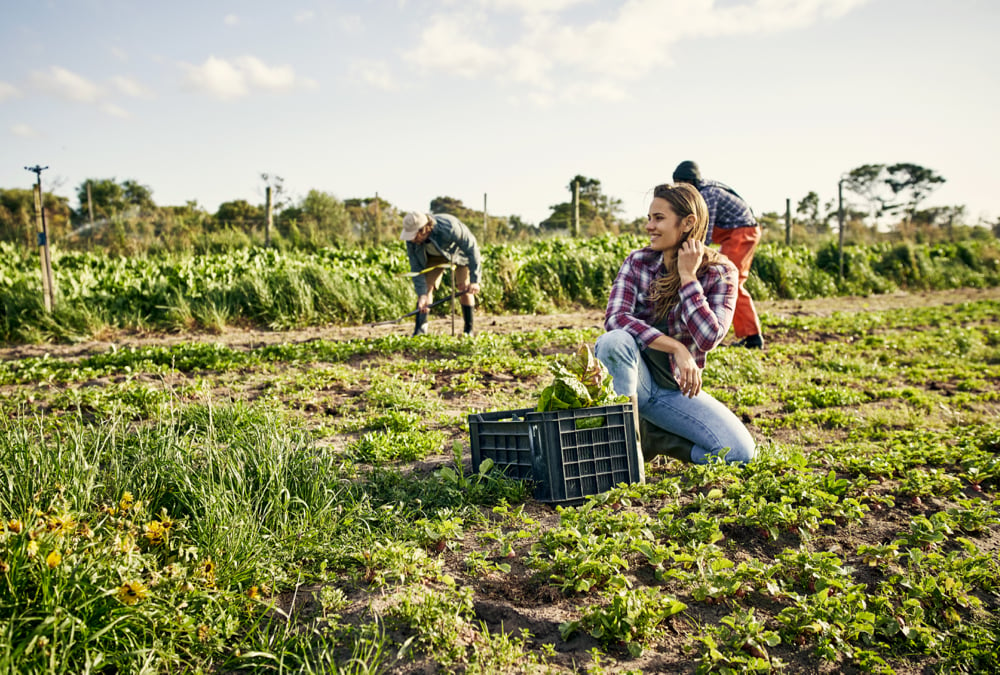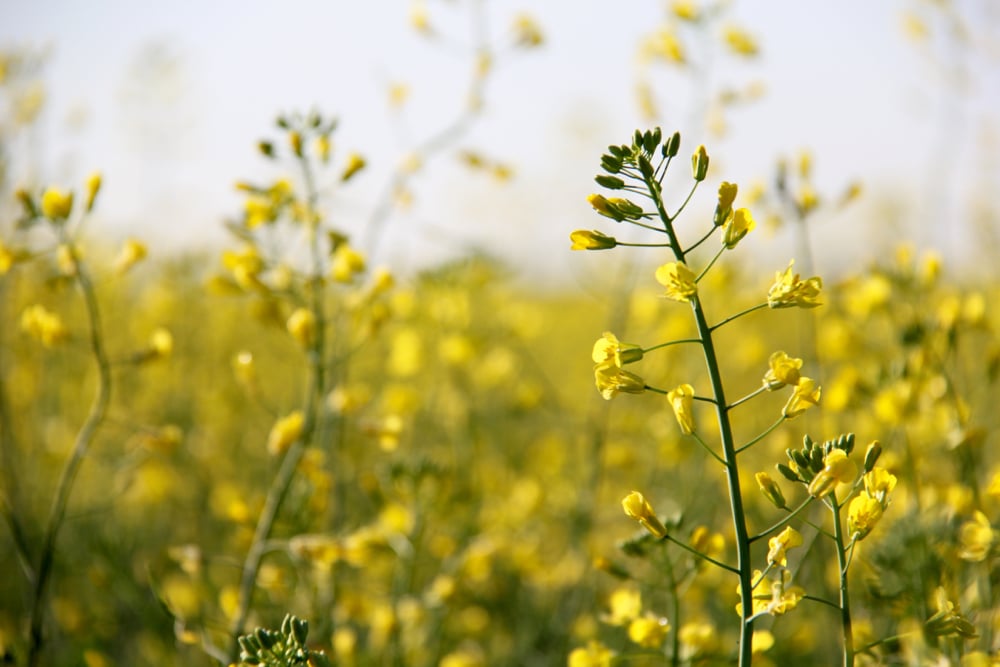Long-term public land leases could enable young farmers

Young farmers who operate businesses on publicly owned properties in Ottawa and the greater Toronto area say long-term leases of public land could be a future path for creative land use and small-scale farming.
Read Also

Growth in canola processing to pull production forward
For the third year in a row, winter canola growers had the highest yields in the 2023 Canola Challenge. Winners…
They related their experiences during a session at the recent conference of the Ecological Farmers’ Association of Ontario.
Why it matters: Lack of access to land is a significant barrier to entry for aspiring farmers who weren’t born into farming families.
“Public lands have really been a blessing to me,” said Chadwick Lewis, a native of the Caribbean island of St. Lucia who came to Canada to study horticulture at Ottawa’s Algonquin College and stayed to establish a market garden business within the city’s federal government-owned greenbelt.
Also speaking on the panel were partners Ekow Stone and Fianna Dirks of It’s Giving Farm, a seven-and-a-half acre enterprise that was one of the first businesses granted a “new tenant lease” introduced in 2022 after the transition of some of the Pickering airport lands to the pre-existing Rouge National Urban Park (RNUP).
Both are federally owned; a large swath of airport lands remain intact and are owned by Transport Canada, and the urban park is owned by Parks Canada.
First on the panel discussion was Genevieve Marquis, agricultural liaison and property manager for the National Capital Commission, owner of 10 per cent of the land in Ottawa/Gatineau. Roughly 14,000 acres are managed farmland, with tenant agreements on properties ranging from 12 acres to 2,500 acres.
One community shared agriculture market garden business is 15 minutes from downtown Ottawa and has approximately 400 members who come to the farm to pick up produce. There’s also a barn hosting farm-themed events.
Another 164-acre property is managed by an Indigenous-run organization that had for several years been offering cultural and tourism programming on Victoria Island in the Ottawa River close to downtown.
After fire destroyed the event centre on the island not once, but twice, Mādahòkì Farm opened its gates in Ottawa’s greenbelt in 2021. Its newest feature is a small herd of Ojibwe spirit horses, used in ceremonies and as therapy animals.
Eighty-five per cent of the National Capital Commission’s farmland acreage is covered by conventionally farmed cash crops, with fruit and vegetables representing the next biggest acreage. Numerous properties are managed by “long-standing tenants who have been with us, in some cases, for several decades and through multiple generations of the family.”
But Marquis envisions “slowly turning the tide” toward ecological farming practices and smaller-scale farmers who serve the local demand for food.
For new tenant agreements, she added, there has been a shift in focus at the commission toward accepting applicants who will live on-site, farm using practices that enhance soil and biodiversity, and have some focus on agri-tourism.
The predominance of non-resident farmers with little or no incentive to protect the soil has been an ongoing criticism of the Pickering airport lands.
A 2021 article posted by Friends of the Pickering Airport, citing information provided to the organization by the urban park, stated there are 219 agriculture parcels in the park, with 114 agriculture leases held by 57 lease holders. Some have more than one parcel of land as part of their lease, and some have more than one lease in the park.
At the time the article appeared and shortly after the federal government granted additional Pickering airport lands to the park, there were 85 farm operations covering about half of the total park acreage – approximately 7,800 acres.
“Farmers in the park grow vegetables, fruit, corn, soy, wheat and mixed grains, amongst other crops,” the article said.
But in the former airport lands, many of those crops were grown on short-term leases by absentee farmers. The newly created lease opportunities that were transferred to the RNUP aim to change that dynamic. And the duo behind It’s Giving Farm is living out that transformation.
Through a request for proposals process, they secured access to their small parcel of arable land with an abandoned house in need of significant work to make it livable again. They’re at the extreme north end of the park near Stouffville, in the “ghost town” of Altona. But it’s just five minutes to a GO transit station.
Submitting the proposal was a sometimes complex and frequently stressful process, said Dirks. The RNUP’s notice was posted in April 2022 and “that’s when the rat race began.”
In the commission lands, there is no proposal process when properties become available. The agency simply announces an availability on its website and asks applicants to send an email explaining their background and their plans. Ideally, applicants should have some capital at their disposal to support their business plan.
The merits of the proposals submitted to the RNUP are weighed by a committee that includes established farmers. As with the commission, a strong business plan and proof that the applicants can finance that plan is crucial.
Dirks said when they realized this, the duo decided it wouldn’t be wise to include grandiose dreams of huge, well-tended gardens and massive greenhouses. Instead, they kept it simple realistic, knowing farmers on the committee would likely see through any pie-in-the-sky goals.
“You want to have a very realistic timeline,” Dirks said.
Both Dirks and Stone got lines of credit and dipped into their savings, and Dirks secured additional financing through family and friends. Conventional lenders wouldn’t look at their out-of-the-box proposal.
Their business plan focused on growing crops with high demand in the GTA that aren’t currently being served, including okra and an eggplant-like vegetable grown in West Africa. The committee, unlike conventional lending agencies, accepted the plan and approved the lease.
“It’s a really exciting time,” Dirks said. “Right now, I think there’s going to be a lot of opportunities” not just for It’s Giving Farm but other small-scale agricultural startups.
In Ottawa’s greenbelt, the capital commission maintains the exteriors of all homes and outbuildings, and supplies sewer, water and electricity. Leases have 25-year terms, with rental in the homes, averaging around $1,700 per month, based on the rates charged in the residential lands that are also managed by the commission.
This home rental rate is similar to the rent now being paid by Dirks and Stone for the home on their RNUP property. Because the home needs work, they qualified for a rent abatement agreement in return for their sweat equity. They’ll fix the house because “we can do (the repairs) much faster than the government could if they put (the job) out to tender and brought in a contractor,” Dirks explained.
Until that work is complete, they’re on a “probationary” 10-year lease that will ultimately be switched to a 30-year deal.
“There are some properties where you would have to fix up an abandoned house and others where there’s a good house already,” Dirks said.
Either way, having a public sector landowner is beneficial because “you’re not dealing with a landlord who’s going to raise your rent whenever they think it’s a good idea.”
Every aspect of the deal is well-defined and documented in the lease agreement.
The commission will act as a commercial lender if the tenant is considering upgrades or new infrastructure. The tenant manages the project and the commission starts collecting interest six months after completion of the work.
Among the long-established leaseholders are some dairy farms that, over the years, have made significant investments in infrastructure and quota. These farmers have first right of refusal on new leases when they decide to retire, as a way to open the door for the transfer of these assets and the leases to the next generation in the family.
For those without a direct connection to farmland-owning relatives, land available through government or quasi-governmental agencies represents a unique opportunity. Lewis advised that young people interested in farming could consider finding an organization – as he did, in the form of the Just Food Community Farm – that’s already operating on public lands.
Through this low-cost entry method, they may later be able to pursue their own lease.
Stone sees the RNUP at the forefront of the ongoing debate about housing shortages. He bristles at anyone trying to pit housing against urban fringe farmers and calls on policymakers to explore more creative perspectives on land use to counter these arguments.
Source: Farmtario.com

